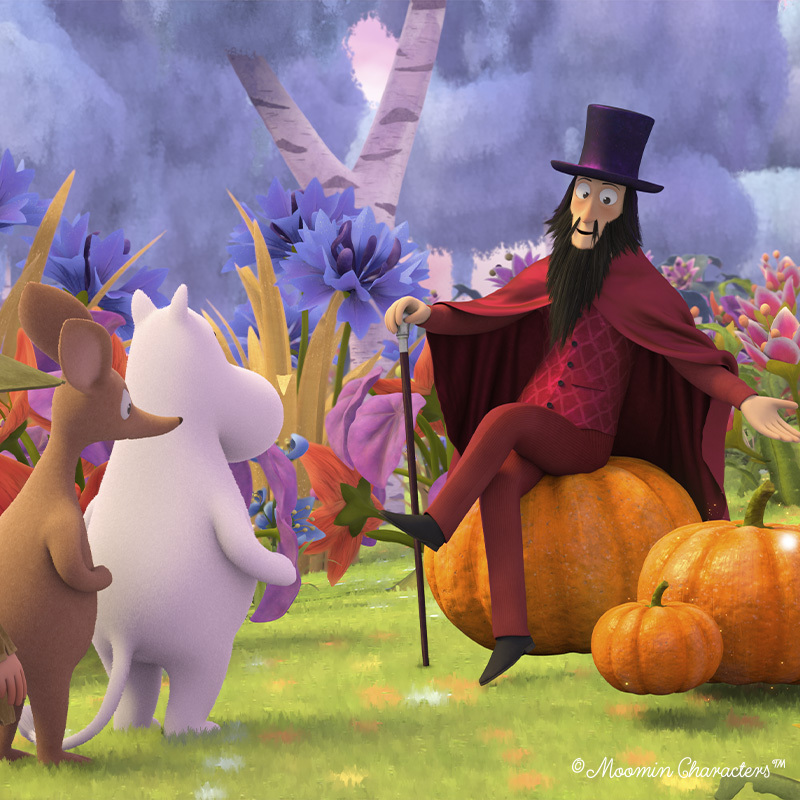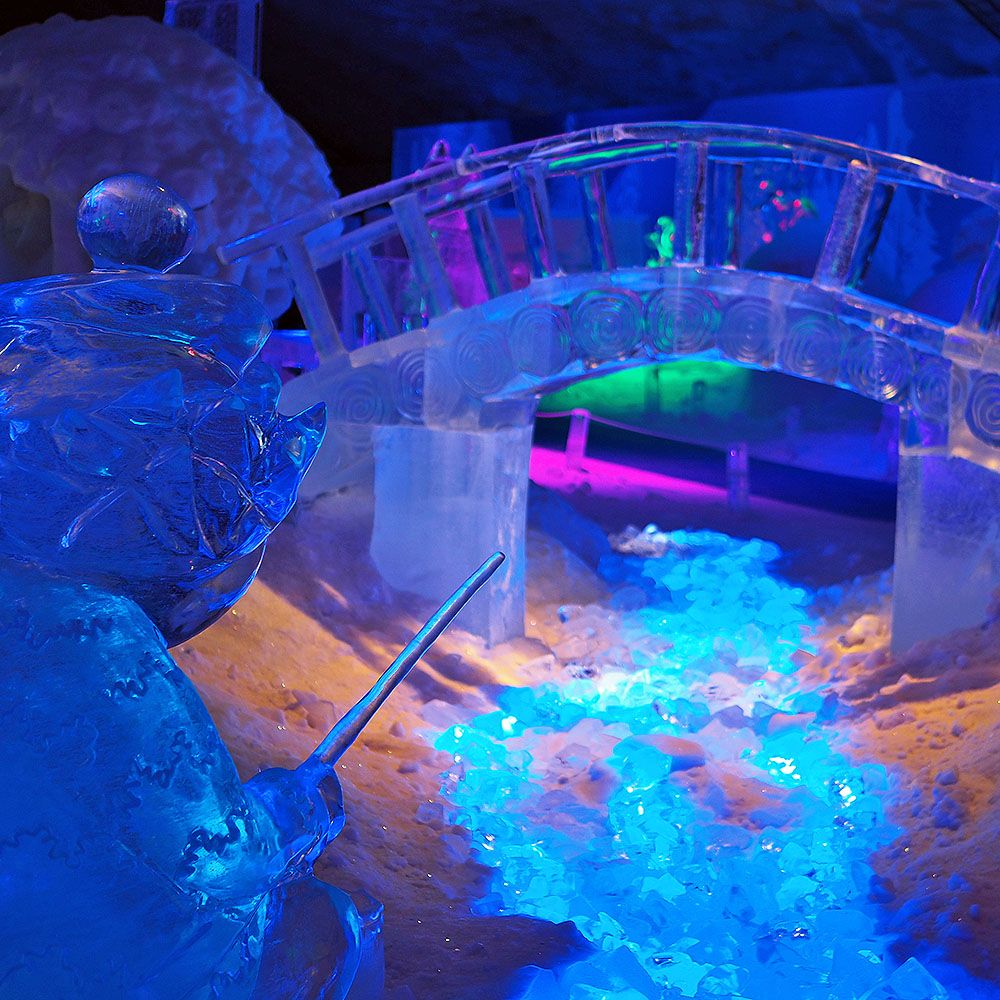Favorite scenes from Tove Jansson's original stories

The new season of the popular Moomin Ice Cave started on 1st April 2023. Moomin Ice Cave has once again been built inside the Vesileppis skiing arena, which is located 30 meters underground inside a mined stone cave. The exhibition features Moomin ice sculptures and various winter activities, for example a snowslide, sleigh carousel and a snow tube track.
The theme of the summer season of 2023 is the favorite scenes from Tove Jansson's original comics. The scenes from the story Moomin Valley Turns Jungle (Tove 1956) have the major role in the exhibition. At the exhibition you can find carnivorous plants, jungle wildlife and the Hobgoblin. How many charaters from the Moomin stories can you find?
Story of the ice

"So, it's not a stretch at all to say that the ice that we harvest in the SnowVillage from Lainio river is unique and among the world's best as raw material for ice sculptures." - Rami Kurtakko, SnowVillage
The story of the carving ice begins in a little pond far away in Finnish Lapland. From the pond a creek runs and turns into the great Lainio river that zigzags 35 kilometers through the National Park - from the hillsides of Pallas-Yllästunturi fells all the way to Lainio SnowVillage in Kittilä, where the clearest carving ice in the world is harvested.
Lainio is a word in Sami language that means a rendezvous point where "subterraneans" (apparently gnomes, according to mythology) and the people aboveground can meet. Itself an arctic meeting point made of Lainio river's ice, the ice cave in Leppävirta for its part complements the story.
Lainio river's unique ice is the optimal raw material for ice sculpting. It is formed in flowing water where the currents slow down the icing and keep the air bubbles in the undersurface of the ice very small. The ice becomes almost bubbleless, clear and very hard.
The story of the ice began almost a year ago. The ice we use this winter was stored already last summer. The storing period improves the quality of the ice, because the condensation makes the ice even harder and gives it a bluish tint.
Natural ice has its own "soul", its distinct shade and its own way of scattering light. Light passes artificial ice like glass, but a sculpture made of natural ice begins to shine when hit by light. This is due to the tiny air bubbles in natural ice, that make the the rays of light break inside the sculpture. However, if there are too many of air bubbles in the ice, or they're too big, the ice becomes weak.
The ice has been harvested from the river at the turn of February-March, when the ice is at its thickest and best. When harvesting ice, the outdoor temperature has to be exactly right: if the weather is too cold, the ice raised from the 0 °c water may crack because of drastic temperature differences. On the other hand, if the weather is even a bit too warm, the ice becomes frail. Sunlight can spoil the harvested ice in just a couple of hours.
The harvester is preceded by an all winter long preparation period, that aims to secure as big a portion of clear ice in entirety as possible.